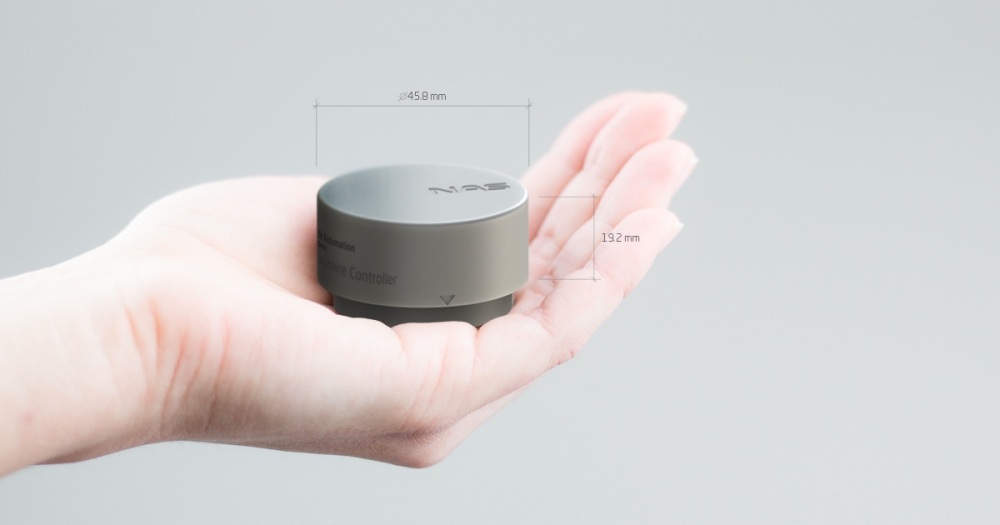
Nordic Automation Systems (NAS) upped their Smart City game today, announcing a “Zhaga Book 18” compliant luminaire controller.
Zhaga is a global lighting industry organization working to standardize components of LED luminaires, including LED light engines, LED modules, LED arrays, holders, electronic control gear (LED drivers) and connectivity fit systems. Book 18 marks Zhaga’s first contribution to the rapidly-emerging world of smart lighting.
Economics is clearly playing a major role in developing businesses cases for scalable and affordable Smart City lighting implementations.
According to NAS’ announcement today, “the cost of investment has been restraining the expansion of the smart lighting market. The new Zhaga 18 Luminaire Controller is up to 6 times more affordable than already existing solutions on the market.”
Another factor is ensuring compatibility with existing form factors. NAS says its’ 40 x 19 mm controller is easily adaptable to new LED light sources equipped with right fit receptacle sockets.
A third factor is the use of LoRaWAN communications protocols, with NAS’ solution being one of the first to work on these local, low battery power, operations optimized networks, which are becoming increasingly popular in Smart City digital architectures.
This new controller allows easier integration to luminaires given a push-and-twist lock feature which automatically activates smart wireless street lighting without complicated internal wiring.
Zhaga is creating a set of Interface Specifications, known as “books” which define the conditions necessary for interchangeability. Each Book defines one or more components of an LED luminaire by means of the mechanical, photometric, electrical, thermal, and control interfaces of the component to its environment.
Products based on several of the Zhaga Books are already in common use in the global lighting market, however NAS new technology is only now being introduced.
Book 18 has define a standardized interface between an outdoor LED luminaire and a sensing/communication module that sits on the outside of the luminaire. The module connects to the LED driver and control system, and typically can provide sensory inputs while also communicating with other luminaires in a network.
Growing electricity prices, increasing environmental requirements and expanding urban growth are driving the worldwide lighting market to high-efficient LED light sources. LEDs provide longer lifetime, lower energy consumption as well as reduced maintenance costs while lighting will last 2-3 times longer than any other conventional light.
Demonstrating the new era in the intelligent lighting industry, the newly developed controller offers an opportunity for cities to start integrating smart street lighting system without major installation investments.
“With the rise of new street lighting models, the small dimensions of the controller are an excellent feature to fit with various designs in street luminaires,” says Viljo Veesaar, the CEO of Nordic Automation Systems.
The Zhaga 18 controller includes:
- DALI 2.0 interface
- Customizable dimming profiles
- Configurable ON/OFF switching
- Real-time data analytics
- Reduced energy consumption and more
Controlling through a DALI 2.0 interface (or with an option to be controlled with a DALI bridge) enables utilities to add more addresses on a single DALI network.
A standardized interface means that the module can be easily replaced in the field, allowing the luminaire to be upgraded via the addition of new smart capabilities. Also, the luminaire can be shipped with a blank cap in the receptacle, allowing a module to be field- installed later if required.
Nordic Automation Systems is a participating member of the Zhaga Consortium and Digital Illumination Interface Alliance (DiiA). The purpose of Zhaga Consortium is to unite companies throughout the global lighting industry. Companies are cooperating in the development of global specifications for interchangeable LED light sources. Zhaga specifications bring stability and choice to LED industry and they are open to everyone.
The Digital Illumination Interface Alliance (DiiA) is an open, global consortium of lighting companies. Its main aim is to grow the market for lighting-control solutions based on IEC 62386, the international standard for digital addressable lighting interface (DALI) technology.
Edited by
Ken Briodagh





